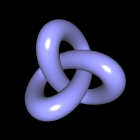Insects and Evolution
Here on the edge of the cloud forest there is more life and there is more death. Walking off-trail in the hills one quickly realizes why everyone owns a machete here. The variety and lushness of the plants is incredible.
So is the variety of insects. Those plants which could not survive the voracious insects are long gone. Those strains which could remain. This is part of the evolution of an ecosystem.
OK, I confess, the above grasshopper is in Texas. But we have plenty here in the state of Veracruz, Mexico, too:
This is the backdrop, this is my mindset when I accidentally encountered the following curious old book:
Wow! I knew those little critters were tenacious and clever. You should see leaf-cutter ants attack a tree! They give new meaning to 'society' and surely insects will have the last laugh over all of us. But 'psychic life'? You gotta be kidding. This book is for real and you can look at it yourself.
This book gives pause and raises questions. Even when I learned a little biology in high school around 1958 we learned that acquired characteristics could not be inherited. I believe this is true, and I think for good reason. But exactly when and why did the Lamarckian view decline? This book seems to advance a middle ground not unworthy of consideration for historical if for no other reasons. Let us not forget that Lamarck was a respected and intelligent person, as was the author of this book.
Jean-Baptiste Lamarck (1744 – 1829)
Is it true as this book says that both Lamarck and Darwin accepted the "inheritance of acquired character"? Somehow I had thought that the last hurrahs of Lamarck had long since faded by 1920 when the original French version of Bouvier's book appeared. Is that wrong?
Someone will surely let me know. In the meantime here is a well regarded modern book on insect evolution that I hope to examine some day:
Evolution of the Insects (Hardcover) by David Grimaldi, Michael S. Engel, ISBN: 0521821495


2 comments:
Muy interesante, Jaime. [This is my second effort to send this, by the way. The first disappeared as if by magic.] As I just told you, carpenter ants seem to bring the fruits of their labor (bits of leaves) into their underground world to grow I think a fungus (or a mold maybe) for food.
Anyway, about acquired characteristics---maybe there's something hereditary that leads an organizm to acquire specific characteristics. Hmm. Maybe that's too deterministic.
Thanks esther. I'm sorry your first effort was sucked into the internet's great black hole.
Here is a wonderful pic (by 'artour_a') showing a leaf cutter ant and the excision path on the leaf:
http://farm1.static.flickr.com/
135/324437696_2e3ede838e.jpg
(apparently this blogger software does not allow this pic here so you will have to cut and paste the two lines of the link onto a single line on your address bar to see the pic on flickr)
Regarding acquired characteristics, its hard for me to understand how I could modify my own genes to pass on -- on the otherhand it IS possible to write a computer program that modifies itself on the fly (sorry) while it is executing! Hmm?
Post a Comment